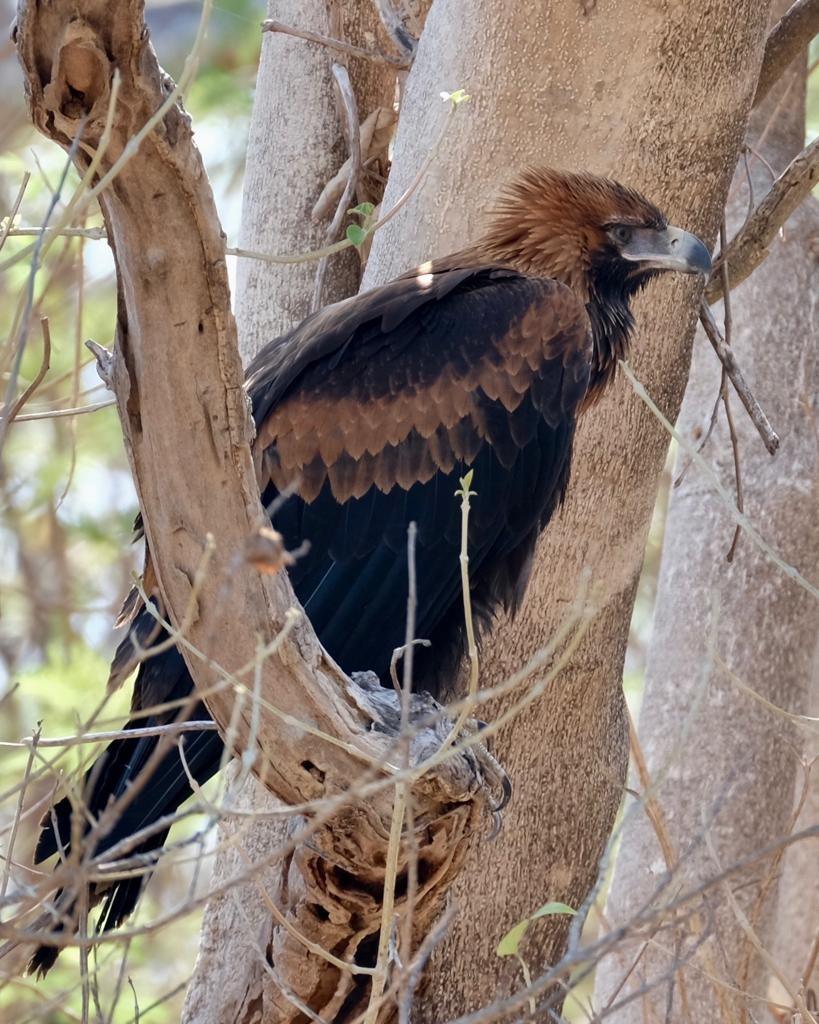
Greetings Friends,
This monthly newsletter (No. 31) includes; Shorebird festival and Gouldian Walks, connecting people and nature, Lee Point Area Plan, plants and wildlife.
1.0 Shorebird Festival and Gouldian Walk
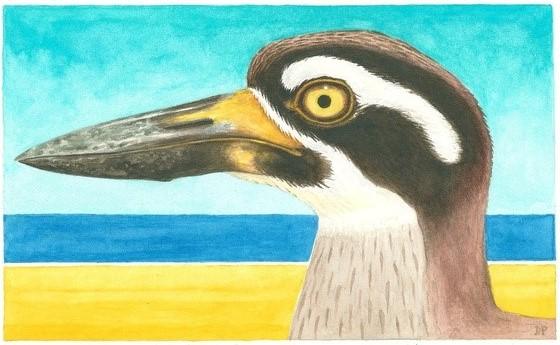
Part of the Shorebird Festival Art Exhibition – painting by David Percival
The Darwin-Garramilla Shorebird Festival organised by Birdlife Topend (Dr. Amanda Lilleyman and volunteers) on 15 – 17 September was a great success attracting people from interstate and overseas. Events involved birdwatching, counting shorebirds, art, music, poetry, mangrove tour and talks. Some were held at Lee Point.
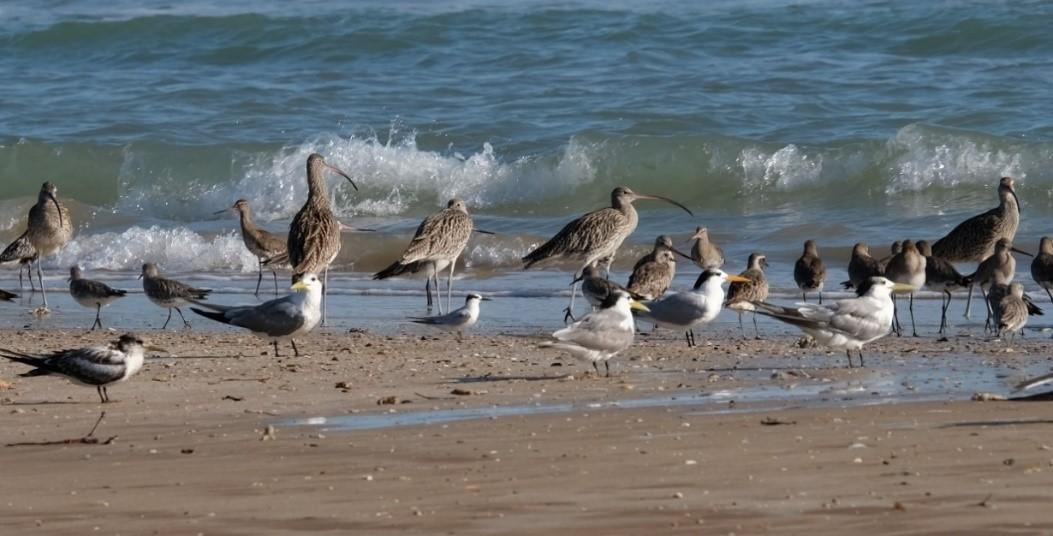
Migratory shorebirds at Lee Point with terns (foreground) – the largest birds are the critically endangered Eastern Curlews.
Thousands of migratory shorebirds have now returned from the Arctic Circle to Darwin. An estimated 4000 migratory shorebirds, mostly (endangered) Great Knots, were counted on Lee Point beach in early September, many of them seen flying here;
Gouldian Walks were held on the weekend of 23-24 September.
Major fires in late August burnt an area of over 50 ha around the Lee Point Dam. Having less grass seed in the burnt area has substantially reduced finch numbers. However, the majority of walks still saw 30 or more bird species. For the latest bird sightings in the Muirhead part of the corridor – see ebird.
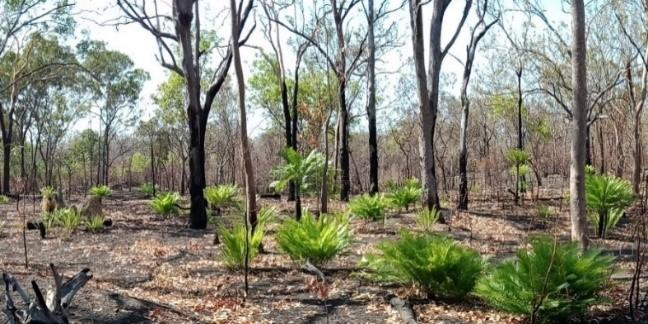
Darwin Cycads at Lee Point after the fire, they are some of the first plants to recover.
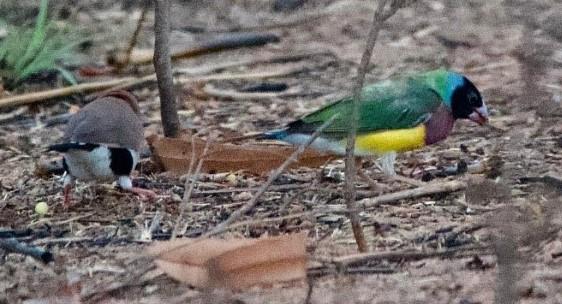
One Gouldian Finch with Masked Finch was seen on the 24 Sept walk and two gouldians were seen by some SER delegates (see below) early morning on the 29 Sept.
Vote now for your favourite Australian bird of the year 2023 – you need to vote every day. The Gouldian Finch and quite a few other birds seen at Lee Point are still in the running.
2.0 Connecting people and nature
The largest ever Society of Ecological Restoration (SER) conference was held at the Darwin Entertainment Centre 26-30 September. It attracted people from 80 nations and was about connecting people and nature through First Nations people. Some of the SER delegates visited Lee Point.
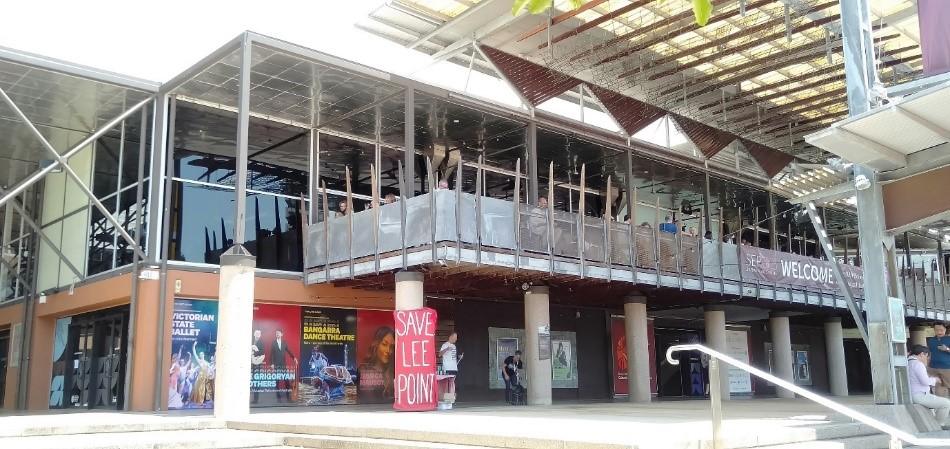
Friends of Lee Point spoke to many of the SER delegates about the DHA housing project at Lee Point. As a result, over 220 SER delegates signed this recommendation;
I recommend that the Larrakia Traditional Owners, Darwin community, ecological experts, and town planners are supported to find an alternative location for the DHA housing project in Darwin that meets the internationally agreed upon biodiversity conservation and sustainability objectives to preserve the natural value of Darwin and the Top End of the Northern Territory,
Larrakia Nation spoke to ABC News in August 2023 saying they would propose alternative sites for the project.
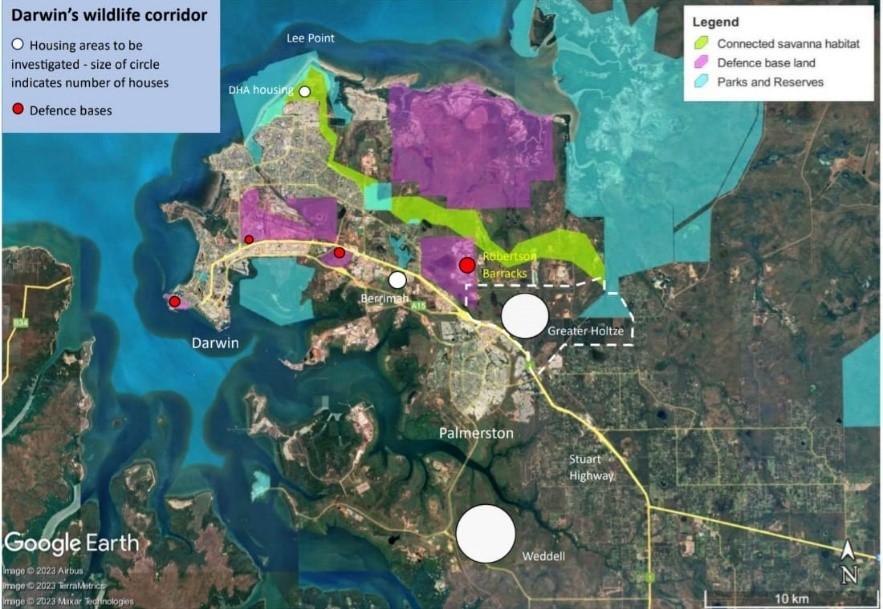
Map showing the study area of the Greater Holtze Area Plan. The corridor in green is a direct route that a small mammal could take using savanna habitat from the rural area to Casuarina Coastal Reserve.
Greater Holtze Area Plan – refer to above map
Ecological restoration projects can be prohibitively expensive. Having appropriate land use plans (zoning) in place early is arguably the best way to protect and maintain critical habitat.
Greater Holtze is the last major greenfield area left in the Darwin-Palmerston area for housing. Currently, the Greater Holtze Area Plan is out for comment (closes 6 Oct). Detailed land use plans for the northern areas of Holtze and Howard Springs are to be prepared through a future consultation process.
Biting insects
Land use plans also consider areas subject to biting insects.
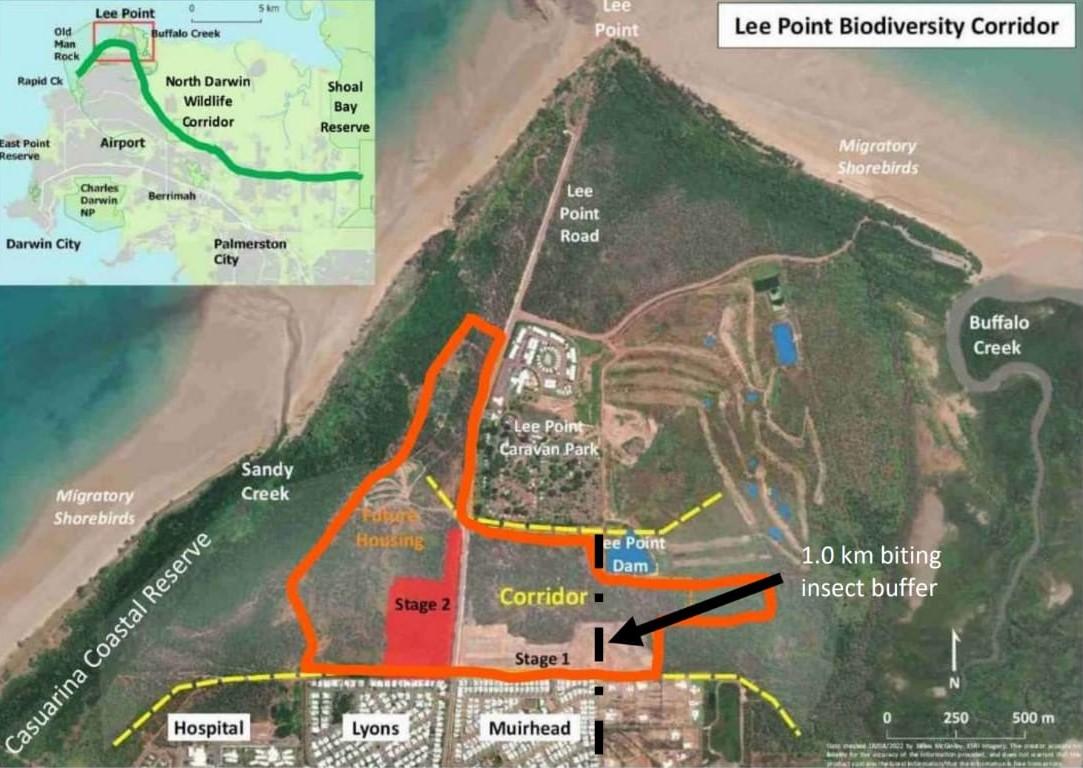
A 1.0 km buffer from midge breeding areas was adopted for Muirhead.
Very high numbers of biting midges occur in the Buffalo Creek area and peak during September to November, read more . Avoiding these areas during the high risk periods is the best option, refer to Biting Midge Pest Calendar 2023.
3.0 Lee Point Area Plan and DHA
There are lots of problems with the Lee Point Area Plan , namely Larrakia Nation and the broader Darwin community do not support housing at Lee Point. In addition to this the NT EPA Assessment Report 88 identified many potential problems (biting insects was just one) with housing at Lee Point.
DHA housing projects are underwritten by the Australian taxpayer. DHA chose Lee Point as the location for their housing project and should have reports that comprehensively address these matters:
-
-
Public benefit-cost information on why the Lee Point site was chosen over other Darwin locations.
-
-
-
Other housing locations investigated to avoid environmental offsets* at Lee Point for the endangered Black-footed tree-rat and the endangered Gouldian Finch.
-
*Environmental Offsets should only be considered as an option after one has tried to avoid or mitigate any impacts.
To date DHA have not made reports available that address the above matters. Please send a letter to Minister Matt Thistlethwaite (minister directly responsible for DHA) asking for the reports. An online letter is at Take Action
4.0 Quiz
Q1. This small tree is flowering at the moment and its fruits are prized as being tasty bush tucker. What is its name?
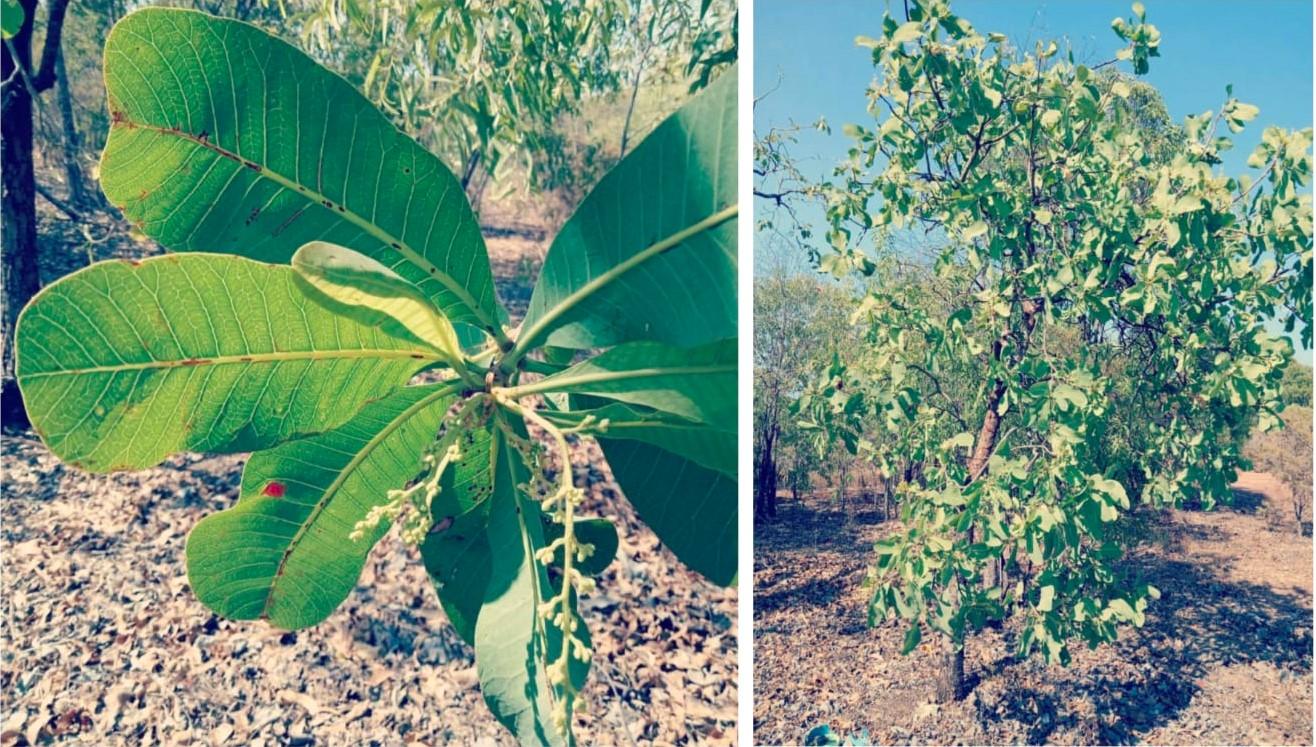
5.0 Plants and wildlife
Below are some plants flowering in the Lee Point Biodiversity Corridor (unburnt area) plus a surprise visitor near Lee Point carpark.
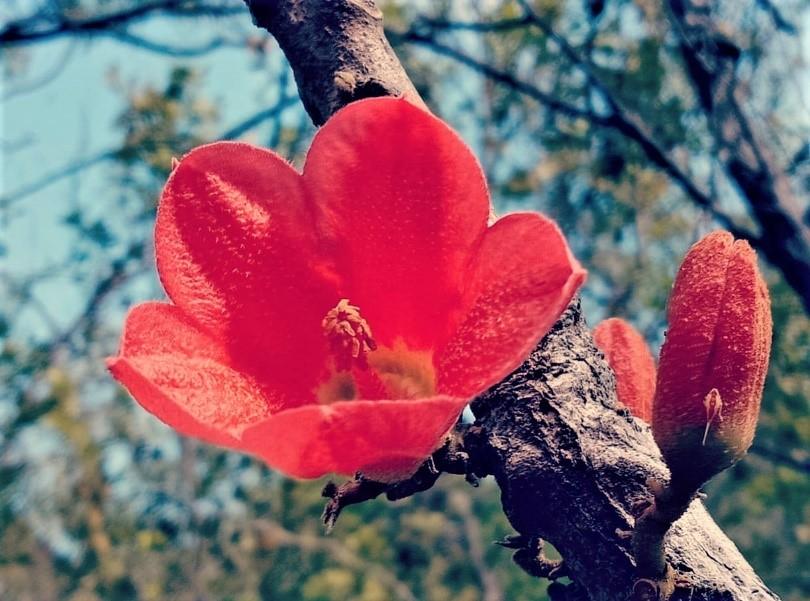
Red-flowering Kurrajong
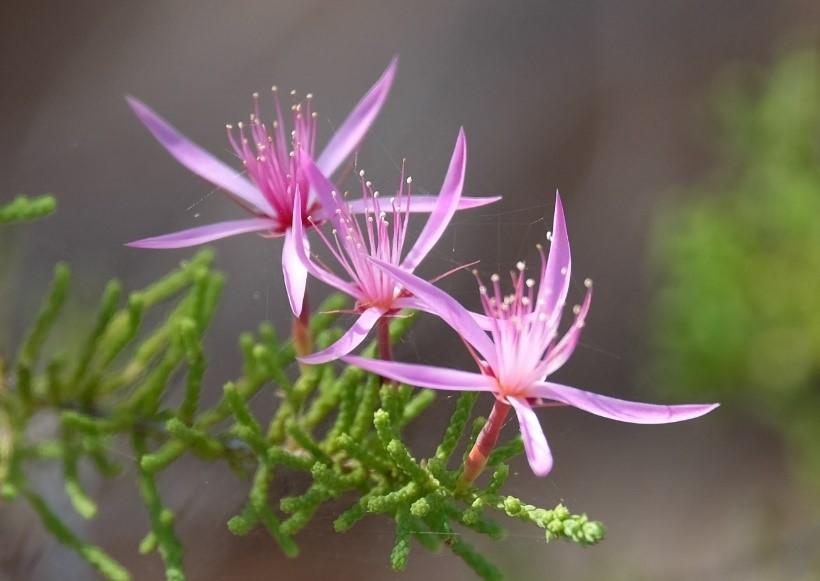
Turkey Bush
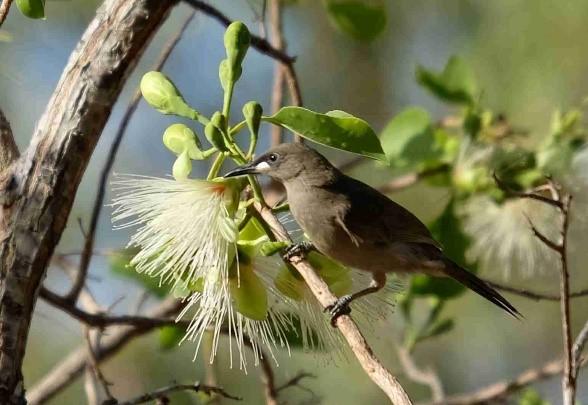
Cocky Apple with White-gaped honeyeater
